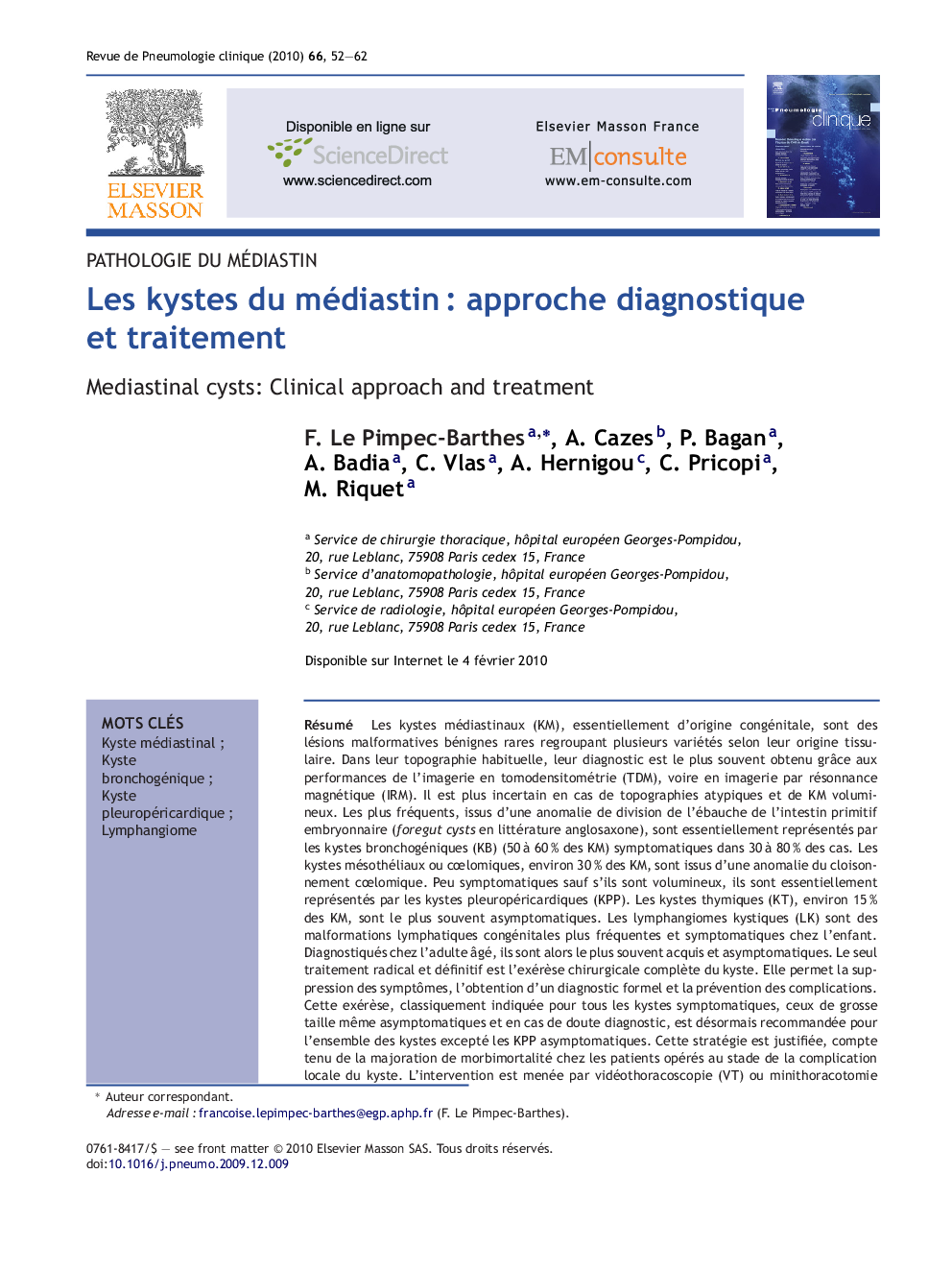| Article ID | Journal | Published Year | Pages | File Type |
|---|---|---|---|---|
| 3419987 | Revue de Pneumologie Clinique | 2010 | 11 Pages |
Abstract
Mediastinal cysts (MC), mainly from embryonic origin, are benign and rare malformative lesions, gathering several varieties according to tissue origin. Diagnosis is mostly obtained thanks to tomodensitometry performance and sometimes by magnetic resonance imaging. It may be more difficult in some atypical topographies and in case of bulky MC. The most frequent, springing from division abnormality from embryonic foregut (“foregut cysts” in English literature), are primarily bronchogenic cysts (50Â to 60Â % of MC), which are symptomatic in 30Â to 80Â % of cases. Coelomic cysts, lined by a mesothelium, result from embryologic abnormality by incomplete fusion of mesenchymal coelomic lacunae. Rarely symptomatic, excepted in cases of very large cysts, they are mainly pleuropericardic cysts (PPC) that represent 30Â % of MC. Thymic cysts, around 15Â % of MC, are most often asymptomatic. Cystic lymphangiomas (CL) are congenital lymphatic malformations more frequent and symptomatic in children. Diagnosed in older patients, they are most often acquired and asymptomatic. The only radical and definitive treatment is complete surgical resection of the cyst. It allows suppression of symptoms, procurement of a formal diagnosis and prevention of complications. This resection, generally indicated for all symptomatic cysts, large-sized even asymptomatic and in case of non formal diagnosis, is now recommended for all kinds of cysts except for asymptomatic PPC. This strategy is justified considering morbidity and mortality rising rates in patients treated by surgical resection at time of local complications of the cyst. Surgery is commonly performed by videothoracoscopy or by video-assisted mini-thoracotomy, mainly for PPC and CL. The more conventional thoracotomy is performed in surgery for cysts, which are adhesive to nearby structures. PPC just need a simple follow-up, and surgery is required only in case of symptoms and increasing size. In total, surgical indications for MC are large and accepted because of null postoperative mortality and very low rate of morbidity thanks to mini-invasive surgery. This militates for early surgery, without waiting for cystic complications leading to peroperative difficulties and increasing risks. This review presents the characteristics of those different cysts and the strategies currently acknowledged for the treatment.
Related Topics
Health Sciences
Medicine and Dentistry
Infectious Diseases
Authors
F. Le Pimpec-Barthes, A. Cazes, P. Bagan, A. Badia, C. Vlas, A. Hernigou, C. Pricopi, M. Riquet,
